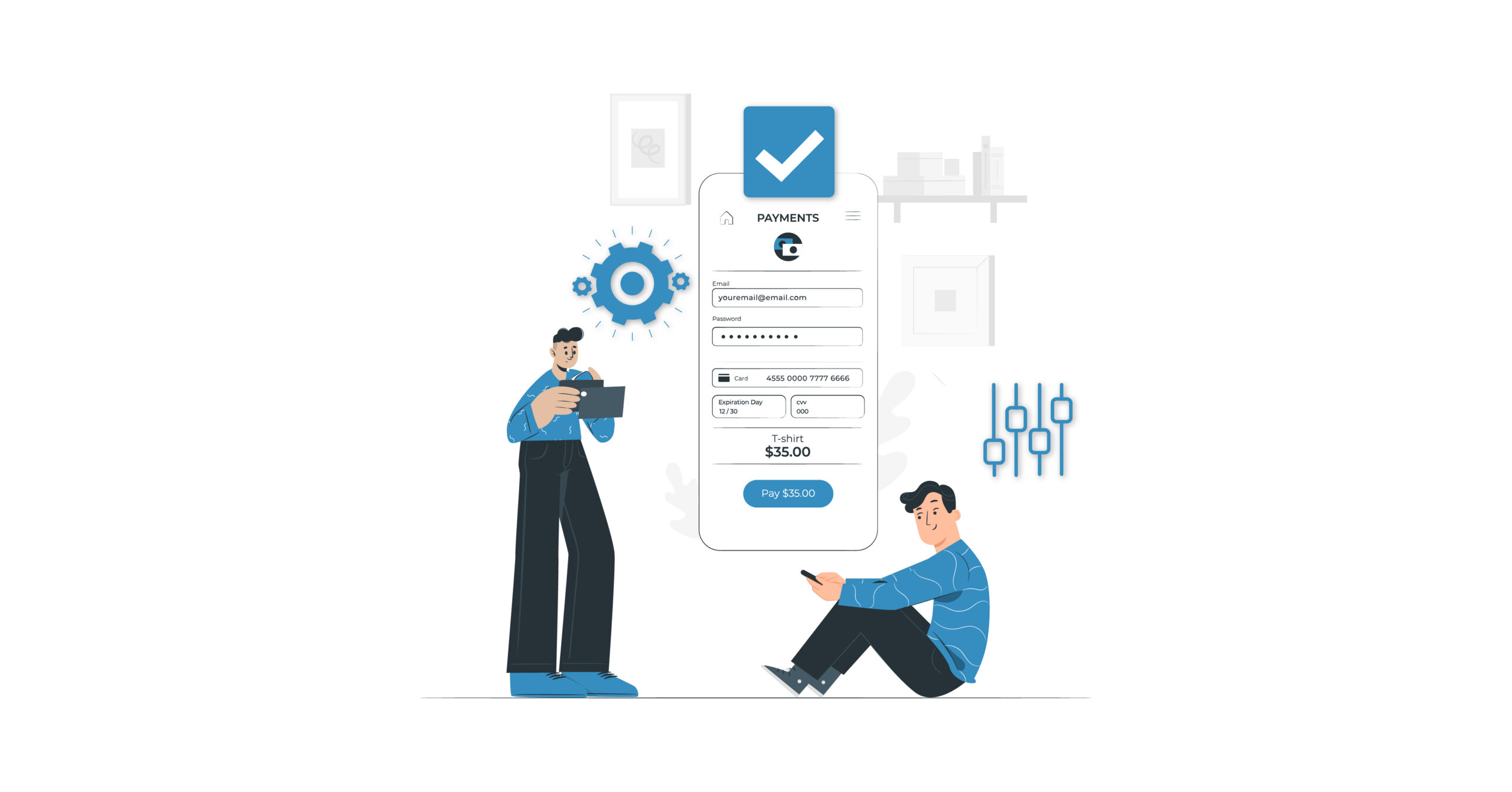Accounting, like many other industries, has a vast array of jargon and terms that may not be used frequently or be comprehensible to the general public. While some of these terms are widely used in business, others are unique to the accounting field.
To better comprehend your finances and effectively communicate with your accounting team, it’s beneficial to understand terms such as big data, generally accepted accounting principles (GAAP), and general ledger. A helpful accounts payable glossary to assist you with it all.
An Accounts Payable Glossary of 39 Fundamental Accounting Terms

If you’re a new addition to the finance team or implementing a fresh accounts payable (AP) strategy, comprehending the fundamental aspects of accounting is essential for devising a successful plan for your organization.
To help non-accounting personnel and entrepreneurs grasp the terminology that governs the accounts payable processes, here are 39 basic AP terms.
- Cash flow
Cash flow refers to the overall sum of cash and cash equivalents that are flowing in and out of a business at a particular point in time. The way a company manages its cash and meets short-term financial obligations can be demonstrated through a cash flow statement.
There are three primary sources of cash flow, which are as follows:
- Operating activities
- Investment activities
- Financing activities
Each of these activities involves different types of cash inflows and outflows, and their effects on a company’s cash balance can be analyzed through its cash flow statement.
2. Certified Public Accountant
CPAs have a crucial role in providing financial advice and guidance to businesses and individuals. They are skilled in preparing financial statements, conducting audits, and generating reports, such as revenue forecasts and profit margin analyses, to inform business leaders and investors about the financial status of organizations. In addition, CPAs can also provide individuals and families with valuable knowledge and advice on taxes and financial planning.
3. Credit
Credit is a bookkeeping entry used to decrease asset and expense accounts while increasing liability, revenue, and equity accounts.
4. Debit
Debit is a bookkeeping entry used in accrual accounting that results in an increase in asset and expense accounts, while decreasing liability, revenue, and equity accounts.
5. Diversification
Diversification is a business strategy aimed at stabilizing and/or increasing revenue by expanding into new markets, industries, or product/service categories outside a company’s traditional area of focus. This is typically achieved through the acquisition or development of new business competencies.
6. ERP
Enterprise Resource Planning (ERP) integrates accounting, inventory, and order management functions into a comprehensive solution that automates manual processes, centralizes business data, and enhances visibility into daily performance across the entire organization. In addition to these core features, certain ERP systems may also incorporate customer relationship management (CRM) and human resources functions.
7. Generally Accepted Accounting Principles (GAAP)
Generally Accepted Accounting Principles (GAAP) comprise a set of guidelines established by the Financial Accounting Standards Board (FASB), outlining the approved accounting methods and practices. Publicly traded companies are obligated to comply with GAAP and to generate GAAP-compliant financial statements on a quarterly and annual basis.
8. General Ledge
GL is a fundamental component of an organization’s accounting system, serving as a central repository that captures and stores all financial transactions. It maintains a record of various financial elements, such as assets, liabilities, revenue, equity, and expenses, thereby enabling a company to produce accurate financial statements and reports.
9. Interest
Interest refers to the additional amount of money charged by a lender on top of the principal balance for borrowing money, such as a loan, line of credit, or other debt. It represents the cost of borrowing money and is typically calculated as a percentage of the principal balance.
10. Liquidity
Liquidity refers to the degree to which an asset, security, or other holding can be readily converted into cash without a significant impact on its market value.
11. Present value
Present value refers to the current worth of a future sum of money, determined by applying a specific rate of return over a period of time.
12. Return on Investment (ROI)
Return on investment (ROI) is a financial performance measure used to evaluate the profitability and efficiency of an investment.
13. Accounts Payable (AP)
Accounts Payable (AP) refers to the amount of money that a business owes to its suppliers, vendors, and other creditors for goods or services received on credit.
14. Accounts Receivable (AR)
Accounts Receivable (AR) refers to the amount of money that a company is owed by its customers for goods or services sold on credit.
15. Assets
Assets are resources or economic resources owned or controlled by an organization that has value and can be used to generate future economic benefits.
16. Balance sheet
A balance sheet is a financial statement that reports an organization’s financial position at a specific point in time. It provides a snapshot of the company’s assets, liabilities, and shareholder’s equity at a given moment, indicating the resources available to the company and how they are financed.
17. Book value
Book value, also known as carrying value, is the value of an asset as recorded on a company’s balance sheet. It is calculated by subtracting accumulated depreciation or amortization from the original purchase cost of the asset.
18. Capital
Capital refers to the monetary reserves that a company possesses or obtains in order to sustain its day-to-day activities, promote expansion, and acquire non-financial assets like land, infrastructure, and equipment that are necessary to support the company’s primary business operations.
19. Equity
Owner’s equity, also known as equity, represents the residual value of a business after deducting all liabilities from its total assets.
20. Liabilities
Liabilities refer to the financial obligations of a business to external parties such as companies, organizations, or individuals.
21. Overhead
Overhead refers to the expenses that a business incurs in its operations that cannot be directly linked to the production or acquisition of goods for resale or delivery of services.
22. Payroll
Payroll refers to the total amount of money paid by a company to its employees in the form of salaries, wages, bonuses, and deductions.
23. Amortization
Amortization is a financial accounting technique used to allocate the cost of intangible assets or loans over a specific period of time. This involves writing down the book value of the asset or loan in equal installments over the designated period, rather than recognizing the full cost as a single expense.
24. Cost of goods sold (COGS) or cost of sales
Cost of goods sold (COGS), also known as cost of sales, refers to the expenses incurred by a business during a given period that are directly associated with the production of goods or the acquisition of products for resale. For service companies, it represents the cost of providing services.
The formula for calculating COGS is:
Beginning Inventory + Purchases – Ending Inventory = Cost of Goods Sold
25. Depreciation
Depreciation is a financial accounting method used to allocate the cost of a fixed asset over its useful life. It involves the gradual expensing of the purchase price of the asset over a period of several years, rather than recognizing the full cost as a single expense in the year of acquisition.
26. Expenses
Expenses refer to the costs incurred by an organization in order to generate revenue.
27. Gross margin
Gross margin is the percentage of revenue remaining after direct costs have been subtracted from net sales.
The formula for calculating gross margin is:
Gross Margin = (Net Sales – Cost of Goods Sold) / Net Sales
28. Gross profit
Gross profit refers to the amount of money a business earns after deducting the cost of goods sold (COGS) from its revenue.
29. Net income
Also known as net profit, net income is calculated by subtracting total expenses from total revenue.
30. Profit and loss statement
A profit and loss statement, also known as an income statement, is a financial report that provides a summary of a company’s revenue, expenses, and profit or loss over a given period of time, usually a fiscal year or a quarter.
31. Income
Revenue refers to any income generated by the business from selling its products and services.
32. Days payable outstanding (DPO)
Days payable outstanding (DPO) is a financial metric that measures the average number of days it takes a company to pay its suppliers for goods and services purchased on credit. DPO is calculated by dividing the total accounts payable by the average daily cost of goods sold.
33. Immediate payment
Immediate payment refers to a payment that is due and payable upon the delivery of a product or service. This means that the buyer is required to pay the seller immediately after receiving the product or service.
34. Invoice
An invoice is a commercial document that a seller sends to a buyer indicating the products or services that were provided, the quantity and price of each item, and the total amount due. The invoice typically includes details such as the date of the transaction, the payment terms, and any applicable taxes or discounts.
35. Net 15, 30, 90
The numbers after “Net” refer to the number of days within which payment is expected to be made.
36. Payment in advance (PIA)
Payment in advance (PIA) refers to a payment made by a buyer to a seller before the goods or services are delivered or rendered.
37. Purchase order
A purchase order (PO) is a document that is typically generated by a customer to initiate a purchase transaction with a supplier or vendor. The PO outlines the details of the purchase, such as the quantity and description of the items or services to be purchased, the price, delivery date, and payment terms.
38. Recurring invoice
A recurring invoice is an automated invoice that’s sent to a customer on a regular basis, usually for a fixed amount or for a specific product or service. This is often used for ongoing services, subscriptions, or other regular transactions where the amount owed is the same each time.
39. Terms of sale
Terms of sale can also include details about shipping, taxes, warranties, and returns. These terms are typically outlined in a contract or agreement between the buyer and seller and are legally binding.





